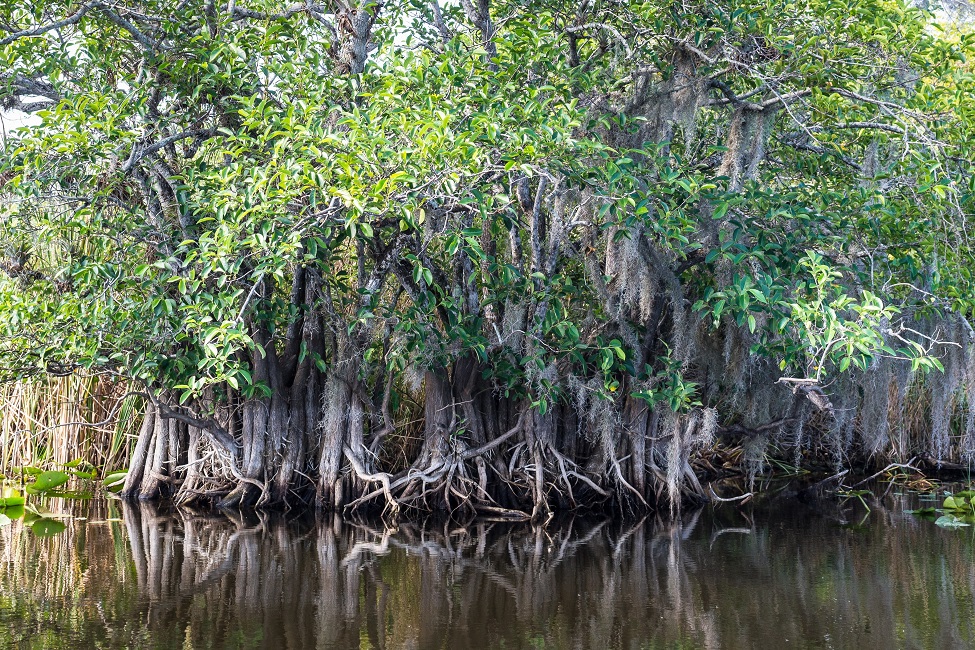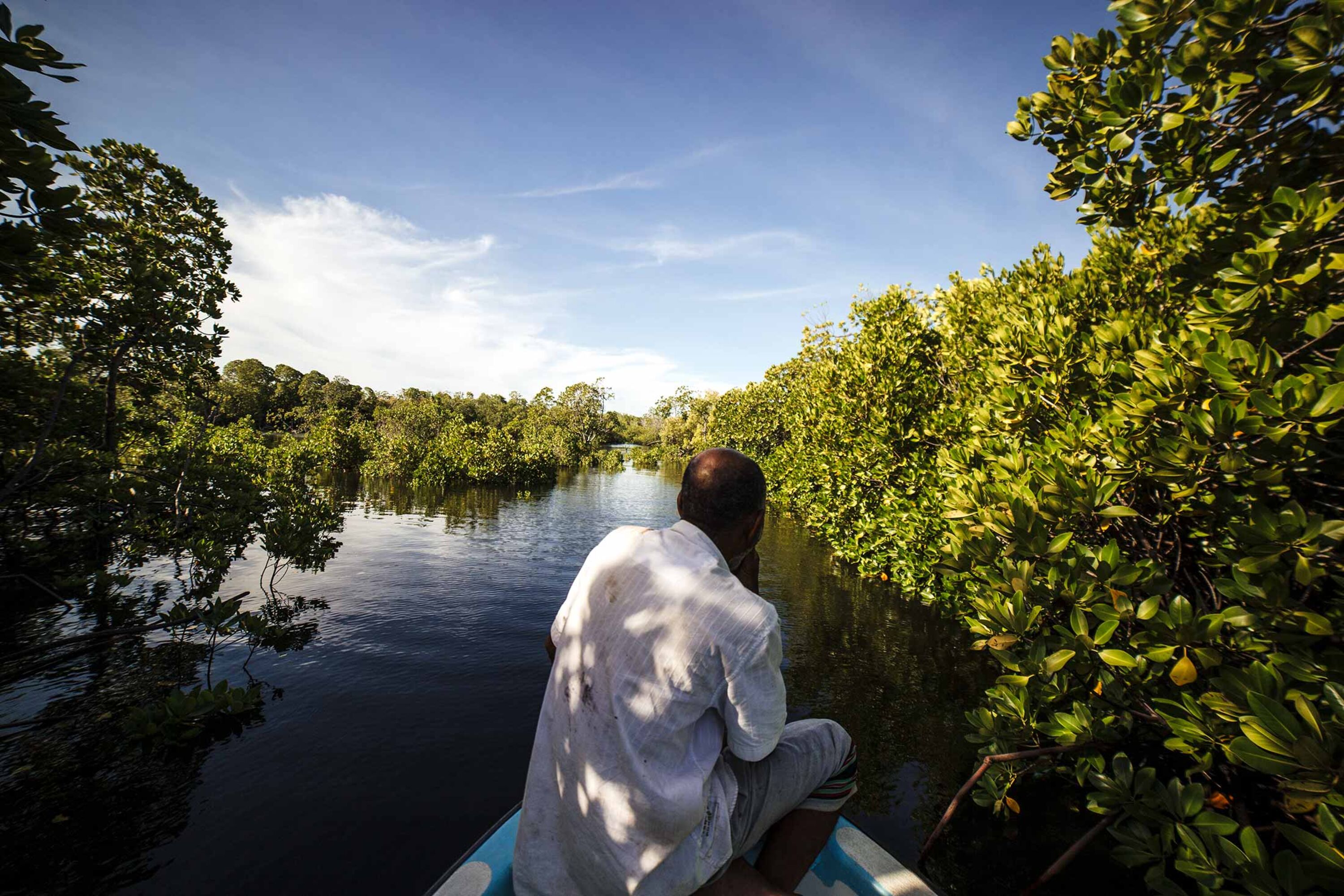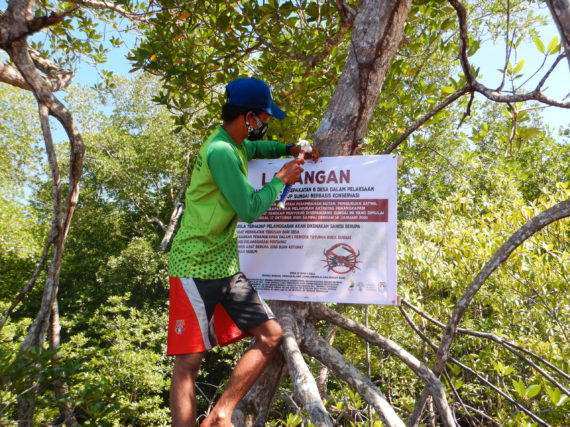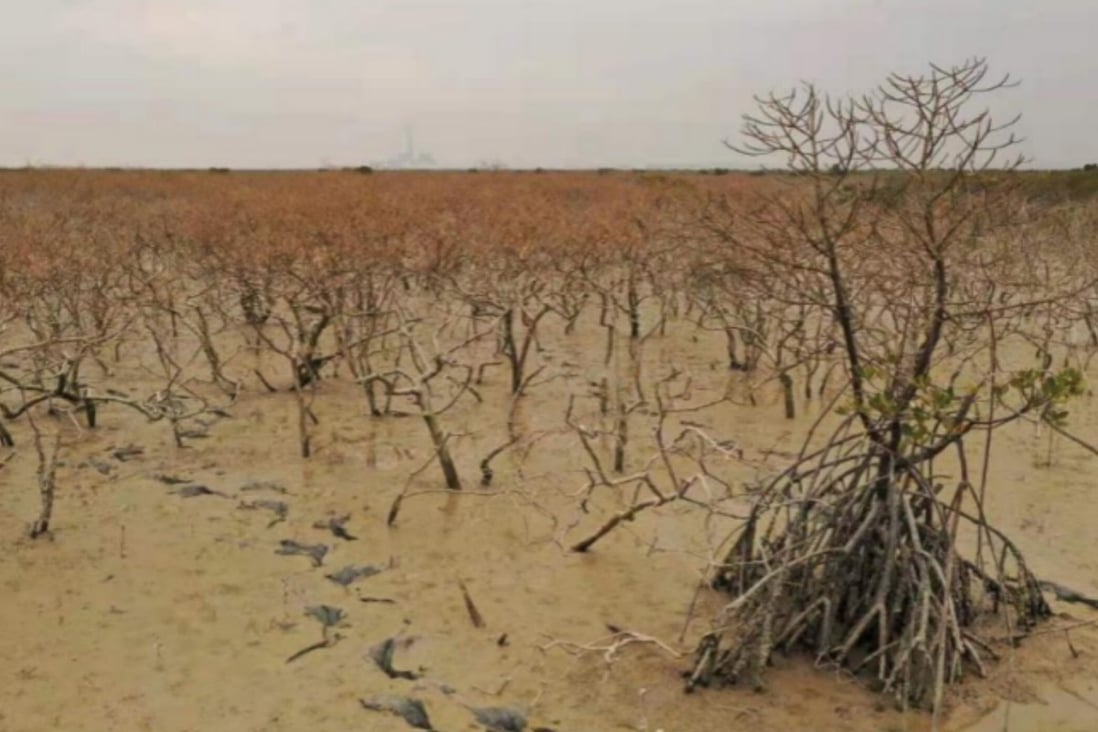FEATUREJoin MAP in the Launch of the UN Decade
USA – Mangrove Action Project is proud to be a Supporting Partner of the UN Decade on Ecosystem Restoration – a global, collaborative effort to ‘halt the degradation of ecosystems, and restore them to achieve global goals. Mangrove Action Project is hosting its 7th annual Mangrove Photography Awards, which gives us a fascinating insight into the world of mangroves from all corners of the earth. The awards offer a chance for photographers, both amateur and professional, to raise their voices for the protection of one of our most critical and undervalued ecosystems. The aim is to illustrate the importance and diversity of life in our coastal forests, engage audiences in mangrove issues and stories, whilst inspiring people to take conservation action. Photo submissions opens today, June 5th, World Environment Day. READ MORE or CLICK HERE TO SUBMIT PHOTOS.
GLOBAL
Mangrove root model may hold the key to preventing coastal erosion

GLOBAL – Mangrove vegetation, which grows naturally in subtropical shorelines, provides a wide range of ecosystem functions such as reducing coastal erosion, promoting biodiversity, and removing nitrogen, phosphorus and carbon dioxide. These vital ecological functions are influenced by the water flow around the intricate mangrove roots, which create a complex energetic process that mixes up sediments and generates a depositional region behind the roots. How these mangrove roots interact with water flow is believed to be a key element in mitigating coastal erosion. Accurately projecting hydrodynamic erosion and the essential amount of mangrove species has been a challenge for managers and restoration experts to forecast a successful component of project designs. That is because they need two critical pieces of information: characterization of the near-bed boundary layer of the mangrove roots and their effect on the mangrove root erosion; and a quantitative understanding of mangrove root erosion and the habitat requirements based on the optimal porosity. READ MORE
AFRICA
Editor’s Note: The fact that this pipeline ends in Tanzania’s mangrove zone where MAP has held CBEMR training workshops bodes badly, and is an insult to the mangroves and us!
‘We cannot drink oil’: campaigners condemn east African pipeline project

UGANDA – Activists have accused French and Chinese oil firms of ignoring huge environmental risks after the signing of accords on the controversial construction of a £2.5bn oil pipeline. Uganda, Tanzania and the oil companies Total and CNOOC signed three key agreements on Sunday that pave the way for construction to start on the planned east African crude oil pipeline (EACOP). But on Tuesday a letter signed by 38 civil society organisations across both east African countries said the parties had failed to address environmental concerns over the pipeline and had steamrollered over court and parliamentary processes. Work is expected to begin this year on what would be the world’s longest electrically heated pipeline, which will move crude oil from fields near Lake Albert in western Uganda 900 miles to Tanzania’s Indian Ocean seaport of Tanga. Uganda’s crude oil is highly viscous, so it must be heated to be kept liquid enough to flow. READ MORE
Preserving Kenya’s Sunken Treasure

KENYA – Along the coast of Kenya, mangrove forests provide an array of ecosystem benefits, including sequestering carbon, preventing shoreline erosion, and protecting fish from tides and predators. But the shrimp and fish aquaculture industries are destroying the very mangroves that are so essential to their health. Now some coastal communities, for which mangroves also have spiritual, cultural, and ceremonial importance, are taking action to restore these special trees and preserve their local economies. Aboud Mohammed’s focus is on the island of Pate, the largest in the Lamu Archipelago, close to the northeast coast of Kenya. As vice chairman of Pate Resources and Tourism Initiative (Prati), Mohammed also heads a volunteer team that’s planted and conserved about 20 hectares (49 acres) of mangrove to promote biodiversity, combat climate change, and protect the livelihoods of local subsistence fishermen. READ MORE
Madagascar’s vanishing trees

MADAGASCAR – Aina Randriarisoa found a perch for Labramia ambondrombeensis on the taxonomical tree of life. She helped identify the tree from its genetic signature, the arrangement of its leaves, the shape of its flowers. Yet Randriarisoa, a 28-year-old Malagasy botanist, has never set eyes on the tree, and she fears she never will. A 400-hectare (988-acre) forest fragment in northeast Madagascar, slightly bigger than Central Park, is the tree’s only known habitat, and it is shrinking. In Madagascar, a bottle-gourd-shaped island off Africa’s eastern coast, it is easy to miss the trees for the woods. Its fabled forests are retreating rapidly; 1-2% are wiped out each year. Millions of years of isolation have given birth to a breathtaking variety of life-forms on the island, including 2,900 endemic tree species. Today, only a few thousand years since humans appeared here, two-thirds of these unique tree species are at risk of disappearing. READ MORE
AMERICAS
Marvellous Mangroves in French Guyana 2021

MAP’s Marvellous Mangroves partner in French Guyana, Lucile Dudoignon of Koté Forest, has had a busy spring with lots of educational action. She was instrumental in creating a teaching kit with many educational tools on Guyanese mangroves which supplements Marvellous Mangroves. World Wetlands Day (February 2021) was celebrated with students of CM1 and CM2. A teaching project was offered to 3 classes. They learned about mangroves from many activities which included sound cards, tracking games, tree species identification, microscopes and diatoms, plus scientific observation with partners, and mangrove stories – both told and mimed. Students from the 3 classes also made illustrated storybooks on mangroves: from writing tales to illustrations – not forgetting presentations on restoration in both theatre and/or the countryside! Mangrove discovery workshops were hosted by Koté Forest and ran from February 01 to 15. The three classes selected for the Mangroves Perspectives project enjoyed the MM workshops as well as a mangrove field trip. Class CM 1 was from Kourou (Palmot School), and CM1 and CM2 classes were from Rémire – Montjoly (Honorian School and Galliot School). READ MORE
Raising the value of a mangrove forest in Colombia

COLUMBIA – A mangrove forest in Cispatá on the northern edge of Colombia’s Caribbean coast became part of a landmark initiative that is redefining the way the financial net worth of stored carbon is evaluated and measured. Under a unique carbon accreditation system designed by partners and executed by Verra, a leading global carbon crediting organization, Conservation International and local partners are generating “blue carbon” credits that account for the full value of mangroves as a nature-based climate mitigation tool. The approach differs from others because — in addition to measuring carbon stores in the mangrove trees alone — it assigns value to the carbon they store in the soil below, according to Jen Howard, who supported the Cispatá project for Conservation International. READ MORE
ASIA
When communities get together: protecting the mangroves of Kubu Raya

INDONESIA – For the mud crab fishing communities in Indonesia’s Kubu Raya regency, sustainable fishing hasn’t always made sense. Many believed that individual efforts, like releasing smaller crabs back into the water, would simply be overridden by someone else’s actions. But over time, this mindset has changed. With support from Planet Indonesia, assisted by Blue Ventures in partnership with Yayasan Pesisir Lestari, communities across Kubu Raya are now driving sustainable mud crab fisheries management, protecting both their mangrove forests and their future. Planet Indonesia develops partnerships with communities and village governments in order to encourage nature conservation for Indonesia’s most vulnerable ecosystems. The coastal area of Kubu Raya, which is also known as the Seruat Pulau Tiga landscapes, is one of the locations where the organisation works. The region consists of six villages: Sungai Nibung, Dabong, Mengkalang Jambu, Seruat Dua, Kuala Karang, and Mengkalang. READ MORE
Meet 10 of Indonesia’s mangrove guardians

INDONESIA – When Iwan Winarto first arrived in the coastal village of Pengudang, on Bintan Island off the eastern coast of Sumatra, he knew the area’s white-sand beaches, stately boulders and clear waters had high potential for tourism. He also learned how its mangroves play a vital role in keeping the water clear despite the bustle of international shipping through the Malacca Strait, and how the seagrass beds provide a home for sea animals such as the endangered dugong (Dugong dugon), a cousin of the manatee Recognizing both the environmental and ecotourism value of the village’s 22 hectares (54 acres) of mangrove, Iwan has made it his mission to protect the land and sea through leadership, education and action. From organizing beach cleanups and planting mangrove seedlings to teaching English to the children of local fishermen so that they can run mangrove tours, Iwan works to preserve what he sees as his village’s most valuable asset. READ MORE
‘Mangroves are life’: the female conservationists rewilding the Cambodian coast

CAMBODIA – When storms whip up the waves, sending white horses charging to the shore, mangrove forests are often the first line of defence for coastal communities in the tropics. And with the climate crisis making the weather ever more volatile, people living in these coastal communities are waking up to the benefits of mangrove forests, which also provide a habitat for fish and other marine species. “Mangroves are life. Without mangroves, there is no biodiversity, and our fishermen will lose their income,” explains Varou Mat, a schoolteacher and mother of three from Kampot Province, southern Cambodia. Kampot is one of the provinces worst affected by mangrove clearance in Cambodia. It and neighbouring Kep have seen their mangrove forests shrink by 62 per cent in the last 30 years, according to ActionAid. The charity is working with women in those communities and elsewhere to help them adapt to climate change. READ MORE
Mangroves Regrow in Iloilo City

PHILIPPINES – Like many port cities in the Philippines, Iloilo City is susceptible to intense flooding and massive landslides each year. In 2011, the government completed the construction of an artificial waterway—the Jaro Floodway—to help divert floodwaters away from the city and mitigate the deadly events. But the new channel also brought an unexpected surprise: a resurgence of mangrove trees. Home to nearly half a million people, Iloilo City is a major hub for sugar exports and fishing. The Jaro River, approximately 17 kilometers (11 miles) long, runs through it. Flowing across this low, flat terrain, the Jaro rises out of its banks during heavy rain events and floods portions of the city. The Jaro Floodway helps mitigate this flooding by diverting water from Jaro River tributaries, the Aganan and Tigum rivers. Part of the Iloilo Flood Control Project, the nearly 5-kilometer- (3-mile-) long channel was constructed to reroute the tributaries’ floodwaters and discharge them directly to the Iloilo Strait. The project included river improvements, diversion channel and dam construction, and watershed management. READ MORE
Chinese state firm’s wetland destruction shows mangrove habitat still under threat

CHINA – A large state-owned port company in southern China was responsible for extensive destruction of wetland mangroves and repeatedly ignored orders from local government to rectify it, according to the Ministry of Ecology and Environment A port construction project in the Beibu Gulf in Guangxi Zhuang autonomous region, operated by Beibu Gulf Port Group, had killed almost 38,000 mangrove plants covering 257 mu (17 hectares, 42 acres) of shoreline as of May last year, the ministry said in a statement last month. Environmental inspectors also found that the construction company had actively removed 168 mangrove trees, breaking local regulations protecting them. READ MORE
Bonsai-like mangroves thrive in south China’s Techeng Island

CHINA – Techeng Island in Zhanjiang City, south China’s Guangdong Province, is home to one of the most beautiful mangrove trees in China The picturesque tourist resort features 50.7 square kilometers of mangrove forests. Many of the bonsai-like mangrove trees growing in the southeastern part of the island are over 100 years old. Dajin Island is one of the countless beautiful islands in the South China Sea. It is a secluded corner without commercialization. Residents on the island need to go ashore to buy supplies and use solar power panels for electricity. The water area around the island is a playground for Chinese white dolphins. READ MORE
Where are the 50 million mangroves gone?

INDIA – West Bengal Chief Minister Mamata Banerjee has inquired about the 50 million mangrove plants that her previous government had planted in 2020 after Cyclone Amphan and which could not protect the Sundarbans from Cyclone Yaas. Banerjee had herself inaugurated the ambitious Sundarbans mangrove plantation scheme in 2020. She asked about them during review meetings on May 27 and 28, 2021. “Where have the 50 million mangroves gone? Last year, there was big talk that they would be planted. How many have actually been planted?” she asked. P Ulganathan, the district collector of South 24 Paraganas, said during a review meeting on Sagar island that the target was achieved in 2020 itself through the Mahatma Gandhi National Rural Employment Guarantee Act programme. READ MORE
Mumbai: BMC dumps hazardous waste in mangroves, creeks

INDIA – The non-governmental organisation Vanashakti has written to the Maharashtra CM and the environment minister and shared photographic and video evidence of BMC-owned vehicles and tankers disposing of hazardous waste and cement slurry in mangroves and creeks. The photos and videos submitted by NGO Vanashakti show two instances, one in Wadala and another in Bhandup, where BMC-owned tankers are seen discharging waste into creeks. The NGO has alleged that the Mumbai civic body was openly dumping hazardous waste and cement slurry into the creeks, causing irreparable ecological and environmental damage, and has sought immediate action from the state government in the matter. READ MORE
LAST WORD
Hello , we would like to announce the dates for our Communities, Climate, and Coastal Ecosystems Showcase Event.
June 15 & 16, 2021 – 10:00 – 13:00 EDT
Add the Showcase event to your calendar
Through partners worldwide, the UNEP / GEF Blue Forests Project (2015-2021) has explored and tested blue forests methodologies and approaches to harness ecosystem services and support carbon financing initiatives, while addressing key knowledge gaps and international policy engagement. The project results incorporate tools and solutions for the greater global application of blue carbon assessment and accounting, payment for ecosystem services, and enhancing capacity for a sustainable blue economy.
BlueCarbonProject
Teaterplassen 3
Arendal, 09 4844
Norway































